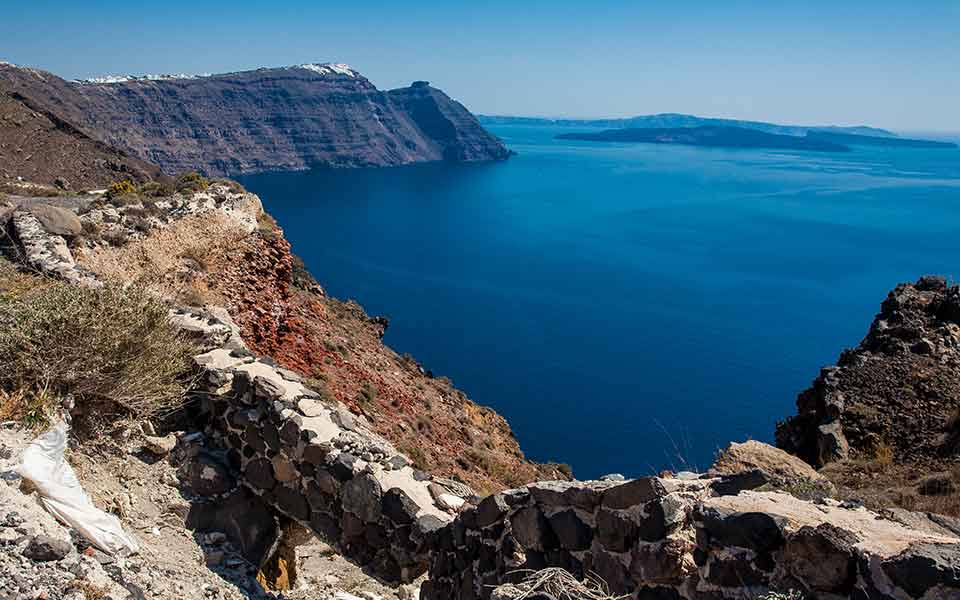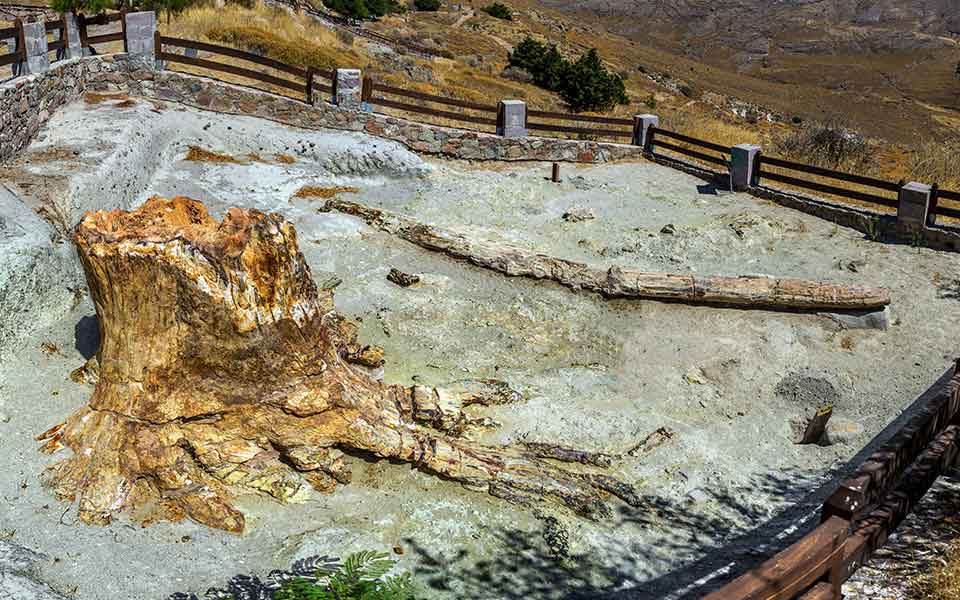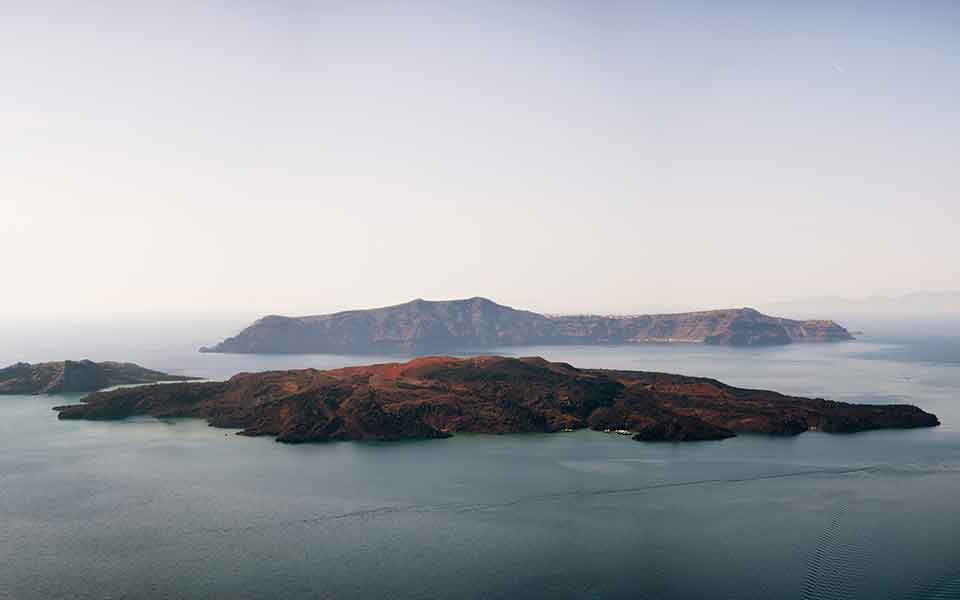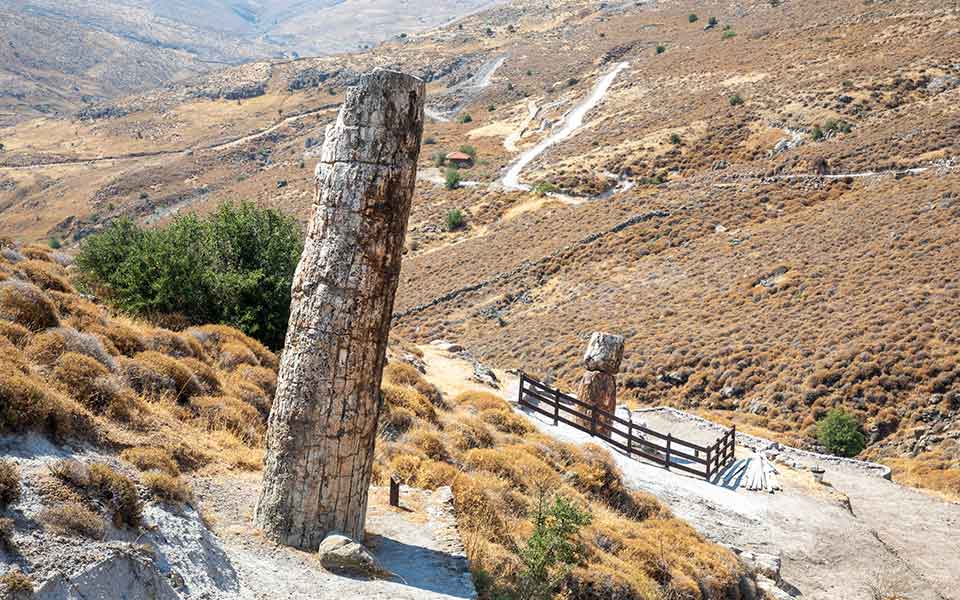A list of the top 100 Geological World Heritage Sites has been announced today, October 6, World Geodiversity Day. Among them are two from Greece: the petrified forest of Lesvos and Santorini’s volcanic caldera.
The International Union of Geological Sciences, in collaboration with UNESCO, has undertaken the initiative of creating a list of the most important areas of geological interest worldwide. In this context, the International Geological Heritage Committee (IUGS-ICG) undertook the program to identify and evaluate the first 100 Geological Heritage Sites.
According to the Committee, a Geological Heritage Site is defined as an area that has geological elements or processes of international scientific scope, which is used as a point of reference or has contributed decisively to the development of the geosciences over time.

© Shutterstock
The petrified forest of Lesvos is already a UNESCO Global Geopark and a protected natural monument. The nomination was formally submitted by the Museum of Natural History of the Lesvos Petrified Forest, and prepared by a scientific team from the University of the Aegean.
The Municipality of Thera submitted the nomination for the volcanic caldera of Santorini, in collaboration with a scientific team from the National and Kapodistrian University of Athens, the Museum of Natural History at the University of Crete, and the University of the Aegean.
The first 100 IUGS Geological Heritage Sites will be honored later this month (October 25-28) at a special event in Zumaia, on the Basque Coast of Spain, an area recognized as a UNESCO World Geopark.
The event is organized on the occasion of the 60th anniversary of the establishment of the International Union of Geological Sciences in collaboration with UNESCO and the Global Network of Geoparks. The nomination of the petrified forest of Lesvos will be presented by Professor Nikolaos Zouros (University of the Aegean), and the nomination of the caldera of Santorini by Associate Professor Paraskevi Nomikou (National and Kapodistrian University of Athens).

© Shutterstock
The petrified forest of Lesvos
The Petrified Forest of Lesvos is a rare ecosystem formed by the fossilized remains of trees, plants and animals, buried under layers of lava and ash from successive volcanic eruptions between 17 and 20 million years ago.
Excavation of the layers of volcanic ash revealed standing and lying tree trunks, inlcuding branches, roots, fruits and leaves, as well as the fossilized bones and teeth of animals. Important fossil-bearing areas are also found in the coastal zone and in the marine area west of the island.
In the area of the petrified forest there are four impressive volcanic geosites, which bore witness to the intense volcanic activity of the Early Miocene epoch. By Presidential Decree, the area was declared a protected natural monument.
It was also one of the four founding members of the European Geoparks Network in 2000 and the Global Geoparks Network in 2004.
The site that has been used for decades by schools to implement environmental education activities, and universities for the study of earth sciences, geohazards and climate change.

© Shutterstock
The Santorini caldera
The mesmerizing geomorphology of the caldera of Santorini, with its unique volcanic formations, is a hugely popular draw, not only for tourists, but for large numbers of Greek and international scientists carrying out groundbreaking research in the area.
It is hoped that its wider promotion and protection, as a result of its successful inclusion in the 100 most important geological monuments worldwide, will provide greater impetus for visitors and locals alike to fully appreciate the extraordinary geological processes that are in motion in this corner of island Greece.
By observing the successive layers of lava and ash that have built up on the island over the millennia, and admiring the imposing slopes created as a result of one of the most violent and decisive volcanic eruptions in earth’s history, the general public will be able to better understand the awesome power of nature
This article was previously published in Greek at kathimerini.gr.












